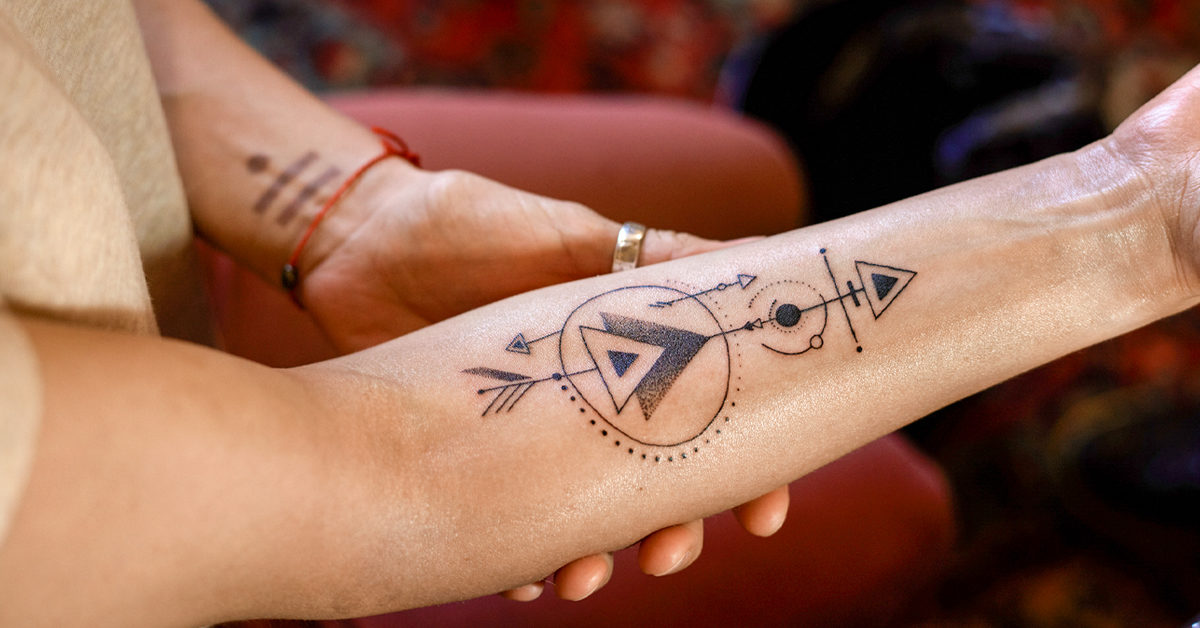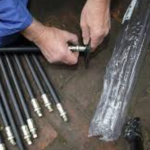Many are the people who decide to get a tattoo at some point in their life, an indelible memory that, in addition, they want to look beautiful. Are you one of them? You already got the tattoo and … now what? Although it is true that you have already passed “the worst” the road does not end when the needle lifts, before you can enjoy this imprint on your skin, you will have to pay attention to it for a few days so that the final result is as desired. To do this, you must take into account the basic care of a tattoo, which will prevent the dreaded symptoms of infection from appearing in the tattoo and will help you achieve the best result. Neutral soap and tattoo healing cream will become, from the moment you leave the tattoo studio, your best allies.
But when should I start moisturizing my tattoo? As it is a common question, then we will give answers to this and other questions that will help you learn how to cure your tattoo in a correct way. Take note!
When should I start moisturizing my tattoo?
The natural healing process of a tattoo lasts between 7 and 14 days, although it is a relative time that will vary depending on the size of the tattoo and the tattooed area, in addition to the reaction of your own body and its healing capacity, and may even reach 30 days until completely healed. During this time it is very important to pay special attention to the tattoo and provide it with specific care so that it heals well and quickly, avoiding complications, such as an infection. Read more: How to clean white converse?
To ensure rapid and correct healing, most tattoo artists recommend using specific products that help to heal and prevent infections., while taking care of the skin, avoiding that the result is a wrinkled and dry or even infected tattoo, which in addition to endangering health in general, can end up leaving a tattoo in poor condition ruining the design. We talk about using neutral soap to wash it daily and healing cream for tattoos. But what if you don’t put this cream on your fresh tattoo? This product helps you heal the tattoo wound more quickly and effectively, keeping the skin hydrated and in perfect condition. It is also important to use this type of cream to soothe the area and allow the tattoo not to lose its shine and color. However, you should avoid scented creams or apply large amounts of cream that prevent the skin from breathing. A thin layer of cream should always be applied to the skin,
Therefore, if you do not use healing cream on a freshly made tattoo, it will take longer to heal, it will have a greater risk of scarring badly, as well as becoming infected, especially if you do not wash it properly. There will also be a risk that the final result of the tattoo will not be as expected, the drawing may be deformed and with less brightness or clarity in the colors. You may like also: How to stretch polyester shirt?
What cream can be used for recent tattoos?
Tattoo healing cream helps you heal a fresh tattoo, maintain its shine and color, and take care of your skin. Therefore, it is very important to use specific tattoo creams that provide the best result and not just any healing ointment or moisturizing creams. So what cream to apply to cure the tattoo?
One of the most popular creams is Bepanthol, a product that is high in dexpanthenol, a restorative substance that helps to treat irritated, cracked or slightly burned skin. In addition, through its lipid substances, a thin protective layer is formed on the skin that acts as a protective barrier, hydrates the skin and prevents too much water from being lost.
As you have seen, this ointment will be your great ally in tattoo healing, but how many days to use Bepanthol? As you already know, the healing process can vary from one person to another, however, it is recommended to use Bepanthol to heal the tattoo during the first 15 days. Then, for 6 more days, you can use a moisturizer without aromas or alcohols to help finalize the healing process and hydrate the cured tattoo. When applying it, be very careful not to produce overhydration rune, do not go overboard with the amount. Here you can know the problem of overhydration of a tattoo: consequences and how to cure it.
If I don’t have Bepanthol, what can I use?
In addition to Bepanthol, there are other brands of ointments to cure a freshly made tattoo that is also very effective and that you can buy at the tattoo studio or at the pharmacy. However, we always recommend that you follow the care suggested by your tattoo artist since he or she knows perfectly the specific products and the results you will obtain. Consult a pharmacy for high-quality creams for after tattooing, self-adhesive curing sheets that will help you during the first 5 days (the professional who tattoos you will surely place one and can provide you with the rest you need) and for the soap neutral with which you must perform the hygiene of your tattoo to keep it always clean.
Be careful with applying other types of products, such as the famous petroleum jelly. There was a time when it was very common to use petroleum jelly for tattoos, but it has been shown that it has more disadvantages for the healing and healing process of the skin than benefits. Basically, it will be adequate to create a protective layer that will help prevent infections that can be given by contact with surfaces with bacteria. However, on the contrary, we find that this film is totally insulating and, obviously, in both directions, so the skin cannot breathe, it cannot exude excess ink and it macerates, which can end, most likely, in an infection. Here we tell you in more detail the Pros and cons of using Vaseline for tattoos.
If you want to use homemade ointments to help to heal, you should prepare them with ingredients with antiseptic, healing and antibacterial properties, such as thyme, rosemary, aloe vera, garlic, honey, rosehip oil, oil of tea tree (in very low doses) or almond oil, among others. Here we detail a recipe so that you know how to make a cream to cure tattoos. Remember that to use this type of cream you have to do it very well and be very careful, so, in reality, it is always better to opt for that medical formulation and that you can buy at the studio or at the pharmacy.
What moisturizer to use when the tattoo is healed?
To finish, we indicate that once the tattoo has healed, it is completely healed, it is still important to care for and hydrate the skin, just as it should be done even if it is not tattooed. Apart from taking care of the skin itself, hydrating the area and helping the dermis to be healthy will help the tattoo look more beautiful and last in perfect condition for many more years. Therefore, once your tattoo is cured, you can apply any body moisturizer. If you still notice the swollen tattoo, even if it is little, wait before starting to use normal moisturizers and if necessary consult your tattoo artist before starting with the use of other creams or ointments.
How to cure an infected tattoo?
If you have not followed the above recommendations, as well as those of your tattoo artist, and you have not used the appropriate products, the symptoms of infection in the tattoo may have begun to appear. Noticing a lot of relief in the tattooed area, having too much pain, seeing the red tattoo, discharge of pus, blisters and pimples, as well as having an increase in temperature and a lot of itching, are the most common symptoms of infection. Here we tell you more about How to know if a tattoo is infected.
If you find yourself in this situation or have appreciated any of these symptoms and you have doubts, on the one hand, the first thing we advise you is to go to your doctor so that he can assess the degree of infection and the status of the tattoo. Do not forget to follow all their recommendations. On the other hand, the following tips will help you know how to cure an infected tattoo:
Suspend the application of healing creams, this way you will avoid softening the wound. In any case, you can use creams that help you both to heal and disinfect or antibiotic creams, sold in pharmacies and para pharmacies.
Wash the tattoo properly with mild soap and warm water, at least 3 times a day. It is very important that you always keep the wound clean to avoid complications.
Dry the tattoo completely with kitchen paper, dabbing lightly and without rubbing or scratching. Don’t scratch your tattoo, even if it stings. The scab should dry and fall off on its own.
To reduce the itching, irritation and inflammation caused by the infection, you can apply ice with a completely clean cotton cloth or damp towel for a few minutes.
Let the wound breathe to speed recovery. Try to wear loose, breathable clothing or leave the tattooed area exposed. Avoid sun exposure to the tattoo, since together with the infection, the ultraviolet rays could burn it and cause it to completely lose its color.













